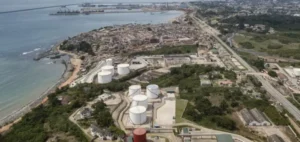PETRONAS announces a significant deepwater discovery in Block 52 offshore Suriname, with recoverable resources estimated at around 400 million barrels. This discovery, named Fusaea, is the third in this block, after Sloanea and Roystonea. These resources could support the development of a floating production, storage and offloading (FPSO) unit with an oil processing capacity of up to 100,000 barrels per day. Since 2019, nine deepwater fields have been discovered in Surinamese waters, but the country is still waiting for its first sanctioned development. According to Wood Mackenzie, TotalEnergies and APA Corporation are close to sanctioning an FPSO cluster development on Block 58, located west of Block 52.
Promising development potential
The Fusaea discovery joins the Baja discovery in 2022, drilled by APA Corporation, PETRONAS and CEPSA in Block 53, eight kilometers north of Roystonea. This geographical proximity could encourage cluster development, optimizing infrastructure and costs. In addition, PETRONAS has already secured tax breaks for gas development in this block, paving the way for mixed oil and gas exploitation. Block 52’s gas resources, estimated at 2 trillion cubic feet (tcf), could anchor a floating liquefied natural gas (LNG) development in the 2030s. The Fusaea well revealed more associated gas than expected, which could add additional resources for future gas developments. With over 2.4 billion barrels of oil and liquids discovered and over 12.5tcf of gas, Suriname is positioning itself as a promising new frontier for the global oil and gas industry.
Partnerships and business opportunities
ExxonMobil, a 50% non-operating partner in Block 52, also plays a crucial role in this dynamic. In neighboring Guyana, ExxonMobil sanctioned the sixth FPSO (Jaguar) in the Stabroek block in April 2024, with a valuation of over $150 billion for the development of the block’s ten FPSOs, at a Brent price of $65 a barrel. This massive development underlines the strategic importance of the region for the world’s oil majors. Julie Wilson, Exploration Research Manager, said, “Suriname is a bright spot for PETRONAS’ exploration efforts. It plays to PETRONAS’ existing skills in LNG development while providing oil to offset its LNG-focused portfolio.”
Environmental and energy impact
The discovery of Fusaea and the development potential it represents are not limited to economic prospects. The integration of oil and gas development could also contribute to a more balanced energy transition for Suriname. By harnessing resources sustainably and maximizing infrastructure efficiency, Suriname could become a key player in clean, reliable energy production. In addition, current developments could have a significant impact on reducing carbon emissions, thanks to advanced carbon capture and storage technologies integrated into new infrastructures. Collaboration between major oil and gas companies and local governments will be crucial to ensure that these projects meet the highest environmental standards. PETRONAS’ discovery of Fusaea marks a milestone in Suriname’s energy history. Strategic partnerships and technological advances will play a key role in realizing this potential.





















